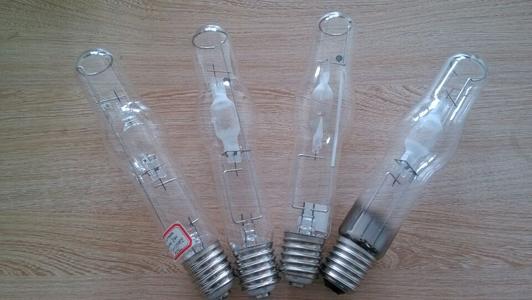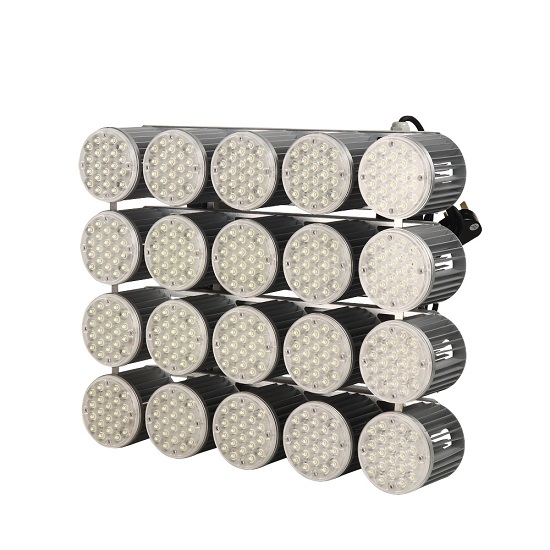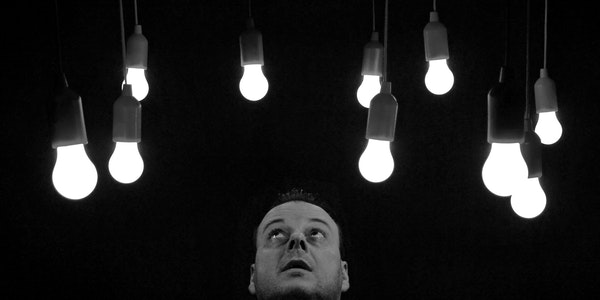How hot is the LED bulb?
It feels hot to the touch, but not as hot as CFL bulbs, halogen lamps and incandescent lamps. LED bulbs are one of the latest and most efficient lumination technology. Compared with the hot filament used in the previous generation of bulbs, the operating temperature of the light produced by high-power lighting LEDs is much lower. The hottest outer surface of an LED bulb is usually half the temperature of an incandescent or high-pressure sodium lamp of the same brightness, which is about 36% lower than the temperature of a fluorescent bulb.
How hot is “hot”?
During development and testing, we noticed that the heat sink of a fully illuminated LED bulb is about 55°C-85°C (110°F-165°F), depending on the airflow, room temperature and LED bulb model. This is a thermal imager image analysis, which includes some representative samples of top LED bulbs-new products purchased from supermarkets and hardware stores last week. The brighter the yellow, the higher the temperature is.
Is the location of the bulb important?
The answer is yes. Bulbs that are placed upright or placed upright generally have a cooler temperature than running sideways. The heat convection airflow passes through the surface of the bulb in a larger area, so the cooling effect is better. The lateral direction is also acceptable, and as a result the display temperature is also within the normal temperature range. In the test, the temperature of the radiator on the floodlight TY-ARE-100L is about 66°C, but more importantly, the temperature of the power supply electronics is 55°C, and the drive power control electronics is kept at 46° C, this is an excellent proof.
For this temperature and high pressure sodium lamp heat comparison, the room temperature is 25 °C. For comparison, in the same test, the surface temperature of a similar lumen output high-pressure sodium lamp is 132°C, and the driving power supply temperature is 105°C, which is 27°C higher than the LED driving power temperature.
What temperature is suitable for LED lights?
We cannot represent all the LED lights in the world, but the high-quality design uses a heat sink and driver with a rated temperature of 116°C.
What you need to know is that, unlike the external radiator temperature, this is the internal electronic device temperature. After the correct design, the lamp design can make the temperature of the electronic equipment at least 22°C-28°C lower than the temperature of the radiator.
Therefore, even if the radiator temperature reaches 86°C, the driving power temperature of the LED lamp can ideally reach 55°C-60°C, both of which are far lower than the temperature of the corresponding parts of the high-pressure sodium lamp.
Will LED lights have a fire hazard?
LED lighting is provided by solid semiconductors, so LED lamps do not emit light from a vacuum like most other fluorescent lamps, halogen lamps or incandescent lamps. If you are thinking about switching to LED lights, whether you are looking for replacements or brand new lights, you will see the full benefits of switching from incandescent or fluorescent lights to LED lights. This is more focused on cost saving and environmental protection of LED lights, but it must also be noted that the possibility of them causing a fire is almost zero.
Excessive temperature is one of the reasons that the lamp may catch fire, but it is extremely unlikely that this will happen to the LED lamp. When we touch the LED lights, it feels very hot, but the temperature of the light they emit is much lower than other lights such as high pressure sodium lights. Traditional lamps use positive and negative poles, and the two poles will consume a lot of electricity due to heat dissipation, while fluorescent bulbs will generate heat due to the heating of mercury vapor.
Traditional lamps emit a lot of heat, which means that they are sometimes themselves heat sources. Incubators for poultry and heaters for reptiles are just a few of the cases.
Because LED lights do not affect the ambient temperature, they are very suitable for narrow or temperature-controlled spaces.
Can LED lights be continuously lit for 30 days?
In the busy life of daily life, it is easy for people to forget seemingly trivial things, such as turning off the light when leaving the room.
What is the difference between the on and off of a lamp?
In fact, whether it is a simple bad habit or the actual need to turn on the LED light for a long time, it is important to ensure that you understand the environmental and safety risks brought by long-term use.
Simple speaking, high-quality LED lights have a long service life and can be continuously lit for 30 days. Unlike traditional lights, LEDs generate very little heat, so they are unlikely to cause high temperatures or fire.
However, like all electronic devices, this is not without danger. In some cases, LEDs can also cause some problems. Therefore, whether LED lights should be kept working continuously for 30 days is a completely different matter.
Compared with the high pressure sodium lamp, how often does the LED lamp break down?
In the past, people had only a few choices when choosing lighting for houses, squares, properties, stadiums, highways, and municipal public facilities, that is, incandescent bulbs, xenon lamps or high-pressure sodium lamps.
According to data from the LED Lighting Community, as of 2010, 60-watt incandescent bulbs are still used in 65% of the world’s lighting. Because incandescent lamps are very cheap to produce and buy, they continue to be popular.
Incandescent lamps emit light by heating two metal electrodes until they emit light. The two metal electrodes are surrounded by a transparent glass cover, which is filled with inert gas or evacuated into a vacuum.
Generally speaking, each incandescent lamp usually lasts 1000 to 2000 hours, but the fragility of the electrode means that it is difficult to actually use the incandescent lamp to reach 1000H, and the incandescent lamp usually burns faster.
Metal electrodes cannot dissipate heat well, which makes certain areas more fragile and more easily damaged than others.
When this happens, the weaker part of the electrode will generate less heat and withstand more heat. This heat continues until the wire melts. Therefore, incandescent lamps are easy to burn out.


